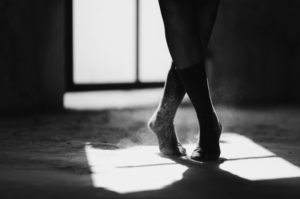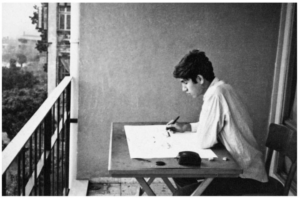
The Cupboard is a relic from my parents’ wedding, once upon a time in 1991. A simple thing, perhaps nailed together and sanded smooth by some guy in a roadside workshop with a wife and seven children waiting to eat of his sweat, three of whom have repeated Class Eight more times than they’ve eaten chicken.
It’s a bit of a pitiful structure, really. It stands sadly against one wall of the dining room in our home upcountry, like an old woman watching the life she can no longer keep up with go by. The Cupboard used to be the main piece of furniture in the room, its burgundy paintwork monopolising attention in an otherwise stark space. This is expected; in the absence of an entertainment unit with a TV and a sound system, domestic life revolved around cupboards like this one, the space that houses numerous family photo albums and the hallowed vyombo vya wageni. We keep all our cutlery and crockery in the Cupboard – the mabati and melamine plates and cups we use every day in the bottom section, the fancy glass ones reserved for when the president (or the pastor) visits in the top section, where they can be seen through the glass doors.
And it’s not just utensils that go in the Cupboard: more keys than we have doors, pressure lamp mantles even though we haven’t used a pressure lamp in at least a decade, broken Christmas decorations from 2002, pesticides that really should be stored better, farm record books, receipts from every supermarket in Eldoret and Nakumatt Mega City (RIP) that one time we were in Kisumu, anything else that looks like it should be thrown away but then again, no, maybe we’ll need it in the future, so we’d best keep it around even if we wouldn’t know which drawer we stuffed it into when that time does come. Who knows? Perhaps there will be a shortage of decorations in the Christmas of 2038, and when that day comes, we will be prepared.
But that was back when we actively resented our parents for forcing us to spend two weeks of every four-week school holiday upcountry, climbing over bags of maize in the store, staying out of the way of that one aunt who liked to call us ‘ghasia’, using sticks to pick ticks off the dogs, picking ndulandula on the side of the road and flinging them at each other – long before we learnt that the English name for the yellow or green fruits was Sodom apple.
Then, as we filled the house with things and things, my father bought a new dining table, shiny and smooth and ornate, made too high because sometimes when you send men to buy furniture, they forget that there are some in their households to whom there is not much with regards to stature. My mother, sister, and I eat at that table with our shoulders scrunched up to our ears and our elbows jutting out severely, making sure that the table made for six doesn’t quite fit six. The Cupboard, by contrast, was out of time and so, out of place.
Before I knew any better, I asked my mother whether she would be replacing the Cupboard with something more… befitting of the snobby relatives from Nairobi, something with cleaner lines, less bulky. Over the years, the weight of my mother’s hospitality has worn it down. Some of the doors are coming off their hinges, but the Cupboard still manages to pull itself together and get the job done. Run-down, but necessary nonetheless, not only because daily life depends on it, but also because it stands testament to my family’s history. Present and past.
On top of the Cupboard rest some family photos, the most outstanding of which is one of my father’s mother. Her eyes are glistening, and her teeth are all out in a full-on grin – she didn’t lose those like she did the rest of her body. She had been in a bad way and was staying with us in Nairobi as she got treatment. But in that photo, you can’t tell. Maybe this is why it’s my favourite one of her. It shows what she wanted people to see – that she was alright, that she was the same woman who had left the abusive husband who dunked her into a drum of boiling water, the same one who adventured all the way to Tanganyika and back on foot, the same one who relocated with three young children to the land her children’s children would inherit, the same one who made a life for herself, alone in a colonial Kenya, and then again in a not-yet-uhuru Kenya. She was gone not long after that photo was taken, and her grave is quickly disappearing because the African Inland Church does not believe in grave marking – it beats the purpose of ‘to the dust we shall return’. Now, when I look at that photograph, her smile says to me, “It was a hard life, but it was a good life.” A comfort. A legacy.
Every time we go upcountry, which is often against our will, we clean out the Cupboard. As I wipe away the dust and cobwebs, slap frantically at spiders, and replace the newspaper lining, I can almost hear a “thank you” in its creaking joints. Things like that make it hard to remember that the Cupboard actually belongs to my mother, and not to my father’s mother.
On her wedding day, a Nandi bride (ideally, I’m told) receives two gifts from her parents. From her father, she gets a cow that’s in calf, so that when the first child comes along, she does not need to worry about buying milk. From her mother, she gets a cupboard, along with some utensils – cups, plates, sotonik (traditional gourds) for mursik (sour milk) – because when you go into your husband’s house, you must be prepared, and you can’t very well expect him, a man, to set up your kitchen for you.
The Cupboard is a symbol, in the way that gifts given to you in ritual by your mother must be. For my mother, it is a piece of her own home coming with her to a new life, to a rearranged hierarchy of roles. No wonder she looked like she might swat me when I suggested she replace it.
I used to hope that my mother wouldn’t give me such a plain piece when I eventually got married. After all, she didn’t take the Cupboard with her to Nairobi when she received it, to the place where she would raise her family and build her career. Instead, she left it behind, with her mother-in-law, in the rural life she had left for the city – a sure sign that the Cupboard had no place in the life and style she was going to pursue. I hoped she would think of this, and select for me furniture that appealed to my born-tao sensibilities. After all, my name literally means she who was born in a modern place, kwa wazungu.
Now that I no longer harbour dreams of white gowns and intentions of married life, I think often about what I will be taking from her: the chance to make the choice between buying a cupboard for me and having one made; the careful selection of just the right wood, the right colour, the right size; the knowledge that the plates, glasses, and cups she buys will usher me into my new responsibilities as wife and mother; the gathering of women in the community to make and decorate sotonik for me because even though I don’t drink mursik, my Nandi-ness remains one of the parts that make up my whole.
I wonder whether there is still a way for us both to find joy in this experience regardless of my life choices. Can she be convinced to stray from culture just far enough to give me this gift for an achievement unrelated to marriage, maybe getting a PhD like she has always wanted? Because somewhere between the version of me that wanted her to replace the Cupboard and the one that exists now, I found this knowledge in my heart: that my mother left the Cupboard upcountry, not in her past but as an assurance of her future. When she’s old and grey, like her own mother now is, and she wants to watch the peaceful sunset of her life, she’ll come back here, to the place where the Cupboard is, where this life that we know now began.
Photo by Marianna Lutkova on Unsplash










Namit February 04, 2023 11:13
I myself feel same about the belonging of my mother and my father... They reminds me of the beautiful time I spent with them ....